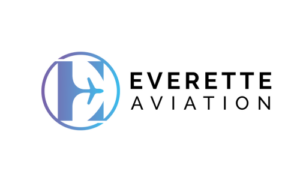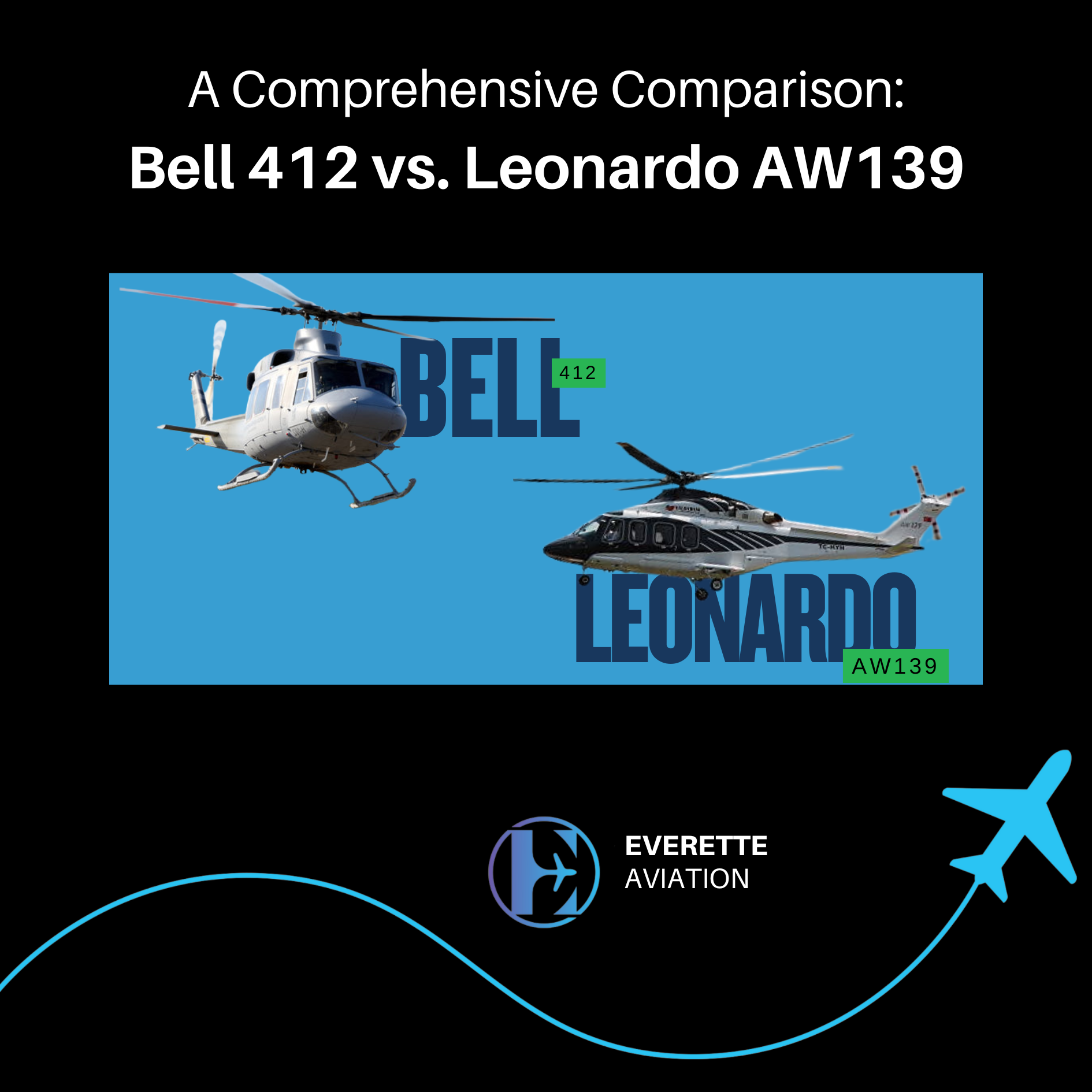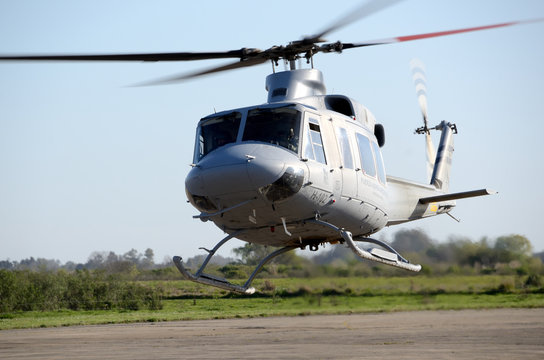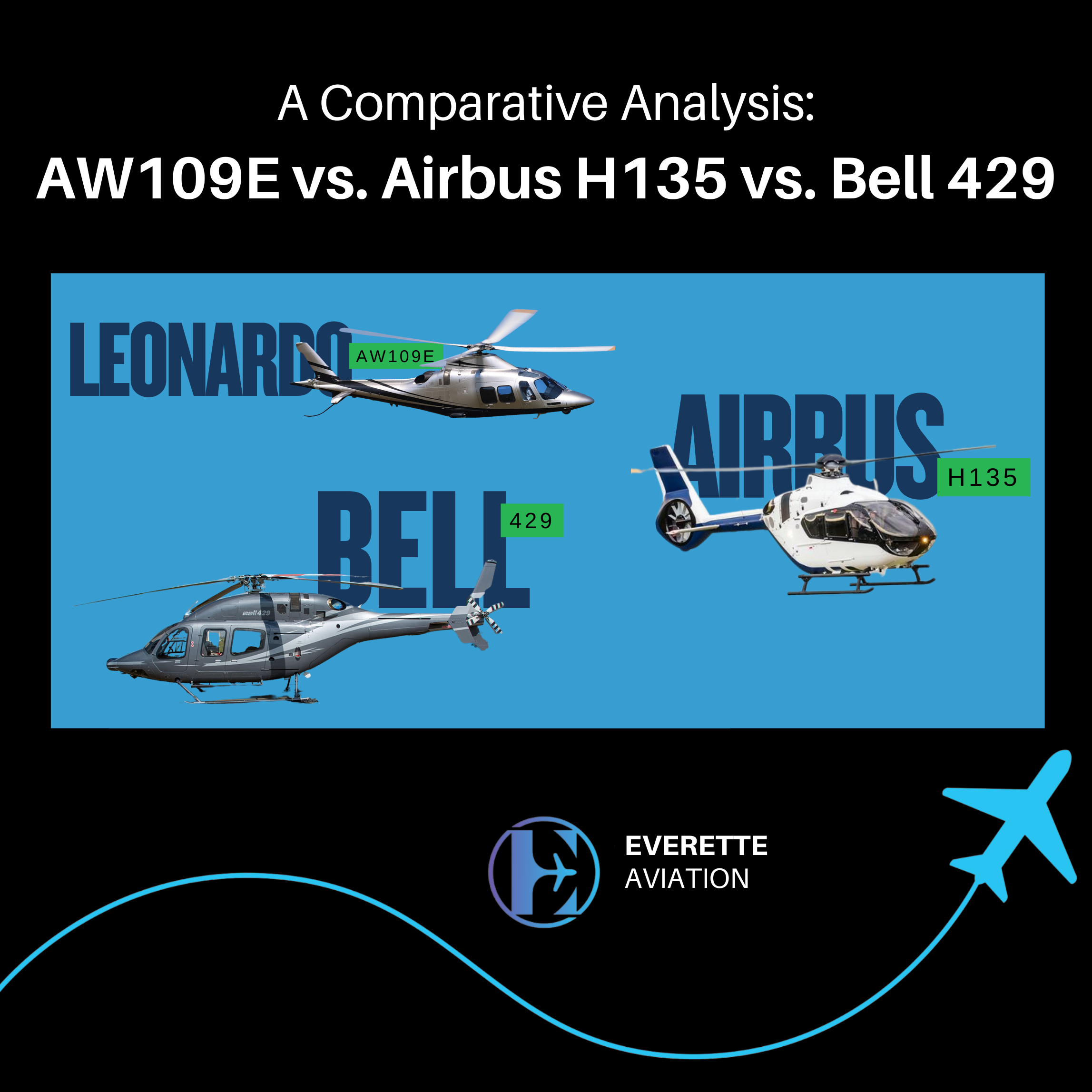When it comes to medium twin-engine helicopters, the Bell 412 and Leonardo AW139 stand out as two of the most versatile and widely used platforms in the world. Each helicopter is renowned in its own right — the Bell 412 for its rugged reliability and adaptability, and the AW139 for its modern technology and exceptional performance. This article provides a detailed comparison of these two workhorses, covering design, performance, capabilities, costs, and mission suitability.
Heritage and Purpose
The Bell 412, introduced in the late 1970s, is a veteran of countless missions worldwide. Built on the legacy of the Bell 212, the 412 features a four-blade composite rotor system that brought improved performance and reliability to utility, EMS, and military operations.
In contrast, the AW139, developed in the early 2000s by AgustaWestland (now Leonardo Helicopters), represents a new generation of multi-role helicopters. It was designed from the ground up with cutting-edge technology, offering a refined balance between speed, payload, and mission flexibility. It has since become a favorite in offshore transport, search and rescue (SAR), and VIP markets.
Design and Airframe
While both helicopters serve similar markets, their designs reflect different eras and philosophies. The Bell 412 retains a conventional semi-monocoque airframe and a four-blade, semi-rigid rotor system. It’s available with either skid or wheeled landing gear, depending on mission requirements. In newer models like the 412EPX, operators benefit from an upgraded glass cockpit and improved performance systems.
The AW139, meanwhile, features a five-blade, fully articulated rotor system with a retractable wheeled landing gear and a crashworthy composite airframe. Its cockpit is all-digital from the start, offering advanced flight management systems, automatic flight control systems (AFCS), and night vision goggle (NVG) compatibility — making it particularly attractive for SAR and offshore missions.
Performance Metrics
The AW139 outperforms the Bell 412 in nearly every raw performance category:
| Performance Metric | Bell 412EPX | AW139 |
|---|---|---|
| Cruise Speed | ~122 knots (226 km/h) | ~165 knots (306 km/h) |
| Maximum Range | ~420 nm (778 km) | ~573 nm (1,061 km) |
| Service Ceiling | ~20,000 ft (6,100 m) | ~20,000 ft (6,096 m) |
| Max Takeoff Weight | ~12,200 lbs (5,534 kg) | ~15,432 lbs (7,000 kg) |
| Engine Output (total) | ~1,800 shp | ~3,358 shp |
Despite its slower cruise speed and smaller payload, the Bell 412 remains popular in high-altitude or high-temperature environments — a testament to its dependable performance and proven rotor system.
Cabin, Mission Flexibility, and Systems
The AW139 offers a larger, more configurable cabin with up to 282 cubic feet of usable space and rear clamshell doors for easy cargo or stretcher access. Its modern avionics allow for full IFR capability, auto-hover, and sophisticated SAR equipment integration.
The Bell 412, while more compact, still provides significant cabin flexibility — with quick-change interiors for cargo, medevac, or troop transport roles. However, the lack of rear loading doors can limit its use in specific SAR or tactical missions.
Operating Costs and Maintenance
For operators watching the bottom line, the Bell 412 offers lower acquisition and maintenance costs. Its simpler systems and widespread parts availability contribute to operating costs typically in the range of $2,500–$3,000 USD per flight hour.
The AW139, while more capable, comes with higher operational complexity and a price to match — usually between $3,500–$4,500 USD per flight hour. Additionally, the AW139 requires more advanced technician training and infrastructure, which can impact smaller or budget-constrained operators.
Operator Use and Mission Profiles
The Bell 412 serves a broad range of operators globally — from firefighting and emergency medical services to military and utility support. Countries like Canada, the Philippines, and Chile rely heavily on the 412 for its ability to perform in rugged conditions.
Meanwhile, the AW139 has found strong adoption in the offshore oil and gas industry, coast guards, and VIP transport roles. Its speed and extended range make it ideal for long-distance, time-sensitive missions, such as medevac flights over water or rapid response SAR operations.
Pros and Cons Summary
Bell 412
Pros:
-
Proven durability and reliability
-
Lower acquisition and maintenance costs
-
Simpler systems = easier field support
-
Excellent hot-and-high performance
Cons:
-
Slower and less range
-
Smaller cabin
-
Older design (despite avionics upgrades)
AW139
Pros:
-
High speed and range
-
Modern cockpit and safety systems
-
Larger, more flexible cabin
-
Ideal for SAR and offshore operations
Cons:
-
More expensive to buy and operate
-
Complex maintenance requirements
-
Requires well-trained crews and support infrastructure
Final Thoughts
Both the Bell 412 and the AW139 are exceptional helicopters, but they serve slightly different niches. The 412 remains a strong choice for utility operators who need a dependable, affordable platform that can handle tough environments. The AW139, on the other hand, is the helicopter of choice when mission complexity, speed, and cabin comfort are critical — and the budget can support it.
Choosing between the two ultimately comes down to mission profile, operational environment, and cost considerations. For utility and government operators with a broad mission set and budget limits, the Bell 412 is hard to beat. For organizations requiring cutting-edge performance and the latest in avionics and cabin design, the AW139 leads the field.










